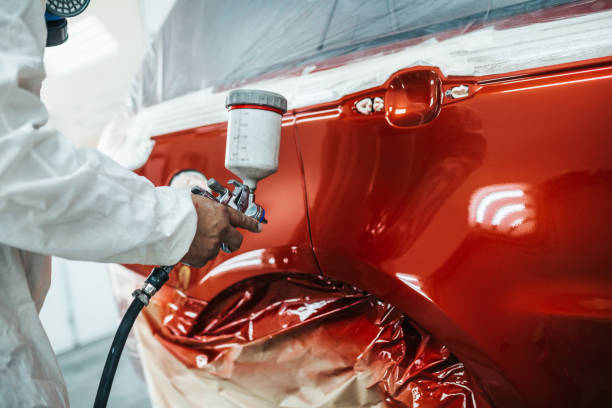The Intricacies of Automotive Paint: More than Meets the Eye
The world of automotive paint is far more complex than it might seem. It's more than just aesthetics—it's a blend of chemistry, engineering, and artistry that has evolved significantly over the years. This article will delve into the fascinating history of automotive paint, its technological advancements, current trends, and potential future.

A Colorful History: The Evolution of Automotive Paint
In the early days of the automotive industry, cars were painted by hand, often with the same type of paint used for carriages. Henry Ford famously said, “Any customer can have a car painted any color that he wants, so long as it is black.” This was because black was the fastest drying color available at the time, ideal for Ford’s assembly line production. However, as the industry evolved, so too did automotive paint technologies. Manufacturers began to introduce a wider range of colors, experimenting with lacquers and enamels to improve durability and finish.
The Science Behind the Shine: Technological Advancements
Over the years, the primary objective of automotive paint has shifted from purely aesthetic to functional. With advancements in technology, paint now plays a crucial role in protecting the car from environmental damages like UV radiation, extreme temperatures, and corrosive substances. Modern automotive paint consists of several layers, each serving a unique purpose. The primer helps paint adhere to the metal surface, the base coat provides the color and aesthetic appeal, and the clear coat offers shine and protection.
Paint Trends: The Industry’s Ever-Changing Palette
Just as fashion trends change with the season, so do automotive color trends. While white, black, silver, and gray remain consistently popular, there’s been a resurgence in more adventurous colors in recent years. Car manufacturers work closely with color specialists to forecast trends and create new shades that appeal to consumer tastes. These color trends can offer insight into broader societal shifts, reflecting changes in technology, environmental awareness, and cultural attitudes.
The Impact of Paint: Beyond the Surface
The choice of automotive paint can have far-reaching effects, from manufacturing costs and resale value to environmental impact. For example, metallic and pearlescent paints require more complex and costly production processes than solid colors. They can also affect a vehicle’s resale value, with more neutral colors typically maintaining value better than bolder shades. Furthermore, the paint industry has faced increasing pressure to reduce its environmental impact, leading to the development of water-based paints and powder coatings.
The Future of Automotive Paint: Challenges and Possibilities
The automotive paint industry faces several challenges and opportunities moving forward. The push for environmentally friendly solutions is driving innovation in sustainable paint technologies. Additionally, the rise of car sharing and autonomous vehicles may change consumer attitudes towards car color and customization, impacting the color palette of the future.
In conclusion, automotive paint is a complex and dynamic aspect of the automotive industry. It’s a blend of science, aesthetics, and consumer psychology that goes far beyond the surface. As the industry continues to evolve, so too will the world of automotive paint, offering fresh challenges and exciting possibilities.




